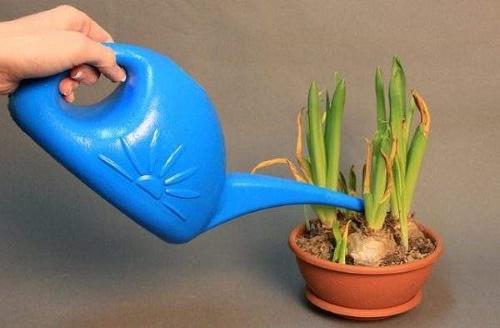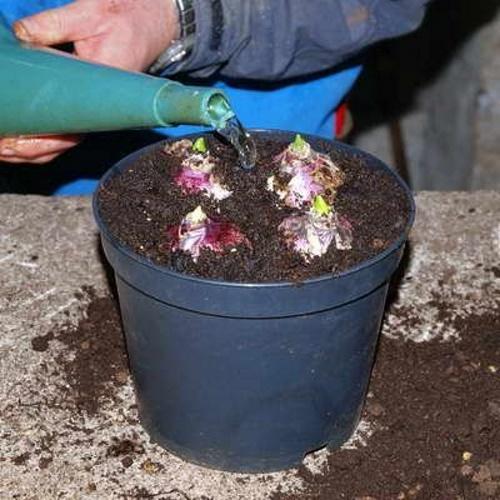How to water hyacinth: watering frequency and methods
 Hyacinths are one of the first spring plants that rush to please us with their gorgeous flowering. They have one more feature that attracts florists. Hyacinths are able to grow both outdoors and indoors. In the latter case, flower care is slightly different and has some nuances, especially with regard to watering. With a garden flower, everything is clear - there it is almost completely provided with moisture by natural precipitation. But indoor hyacinth is completely dependent on its owner. The problem is that he loves moisture very much, but, like all bulbous ones, he does not tolerate its excess. How to water hyacinth so as not to "fall in love" with it with your care and not to provoke diseases? Today we will tell you which watering method is best to use and how often you should do it.
Hyacinths are one of the first spring plants that rush to please us with their gorgeous flowering. They have one more feature that attracts florists. Hyacinths are able to grow both outdoors and indoors. In the latter case, flower care is slightly different and has some nuances, especially with regard to watering. With a garden flower, everything is clear - there it is almost completely provided with moisture by natural precipitation. But indoor hyacinth is completely dependent on its owner. The problem is that he loves moisture very much, but, like all bulbous ones, he does not tolerate its excess. How to water hyacinth so as not to "fall in love" with it with your care and not to provoke diseases? Today we will tell you which watering method is best to use and how often you should do it.
Features of watering at different stages of hyacinth development

The planted onion is kept in a cool and dark room for the first time so that it takes root. Immediately after planting, the soil must be well moistened. In the future, it is important to carefully monitor that it does not dry out, and regularly, but in moderation, water the plant. Parting is also not worth it, because the pot will be cool, where the moisture does not evaporate so quickly.
When the bulb sprouts, it is transferred to a warmer room. Accordingly, now you need to water the hyacinth a little more. When the peduncle is formed, the plant is completely rearranged to a warm and lighted place. It is during this period that hyacinth needs moisture the most, so the frequency of watering should be increased.
When watering, it is important not to allow water to get on the leaves and peduncle, otherwise the hyacinth will rot.
And here after flowering watering should be gradually reduced. When the peduncle and leaves wither, the hyacinth goes to rest. It is often not necessary to moisten the soil when the flower is resting. It is enough to periodically spill the substrate slightly so that it does not dry out and the bulb does not disappear.
How to water hyacinth?
 Despite the fact that hyacinth is a moisture-loving crop, it should not be constantly in water. There are two ways to water a flower:
Despite the fact that hyacinth is a moisture-loving crop, it should not be constantly in water. There are two ways to water a flower:
- Straight into the pot. In this case, water should be poured along the edge of the dishes, and the excess flowed into the pan must be drained.
- Into the pallet. The most optimal irrigation method, which minimizes the risk of water getting on the flower and overflowing. The plant itself will take as much moisture as it needs.
Thus, watering for hyacinth is one of the important points not only for the development, but also for the flowering of the bulb. In constantly moist soil, the flower will begin to ache, and vice versa - if there is not enough water, the peduncles will be short. It is necessary to find a middle ground and then the hyacinth will reveal itself in all its glory.